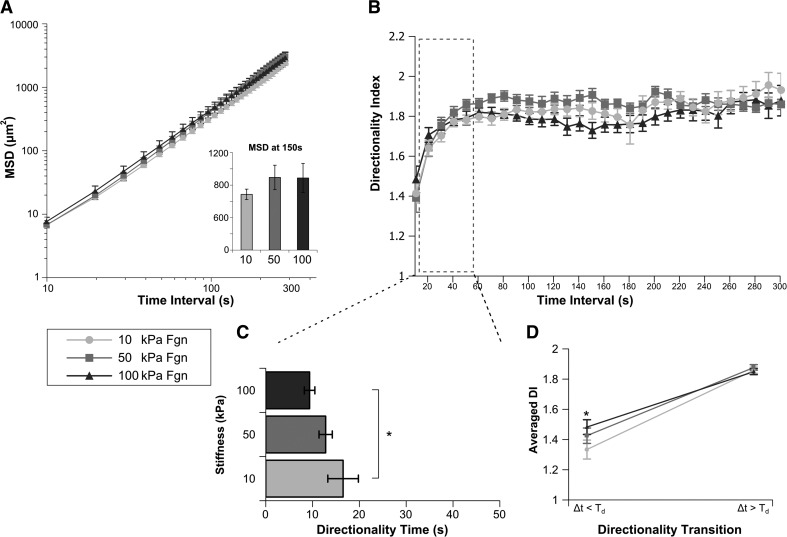Figure 3. Cells migrating on Fgn-coated gels toward fMLP have similar MSD and RMS speed but show a mechanosensitive change in Td and DI<.
Human primary neutrophils migrating on Fgn-coated gels of 10 kPa, 50 kPa, or 100 kPa stiffness toward a fMLP point source were tracked over a 30-min period (Supplemental Video 1). (A) The MSD of neutrophil migration paths is plotted as a function of time between steps. (Inset) The average MSD at time interval of 150 s for each condition. MSD and RMS speed for cells migrating on Fgn-coated gels are independent of substrate stiffness. (B) The average DI of each condition is plotted over time interval. (C) For each cell, index DI(Δt) was fit to an exponential DI fit function, yielding mean values of Td that represents the time interval at which migration transitions from random to directed. Cells migrating on Fgn-coated gels show a stiffness-dependent change in Td, with cells migrating on 100 kPa gels transitioning to directed motion at a significantly shorter time interval than those on 10 kPa gels. (D) The fit of DI(Δt) was also used to generate values for DI< and DI>, which quantify the degree of randomness in the migration path over short time intervals <Td and the degree of directedness in the migration path over long time intervals >Td, respectively. These data are plotted as the directionality transition. Cells migrating on 100 kPa gels have significantly more directed DI< than cells on 10 kPa. DI> of cells on Fgn-coated gels is independent of substrate stiffness. Error bars represent sem. *P < 0.05, 10 kPa versus 100 kPa.

